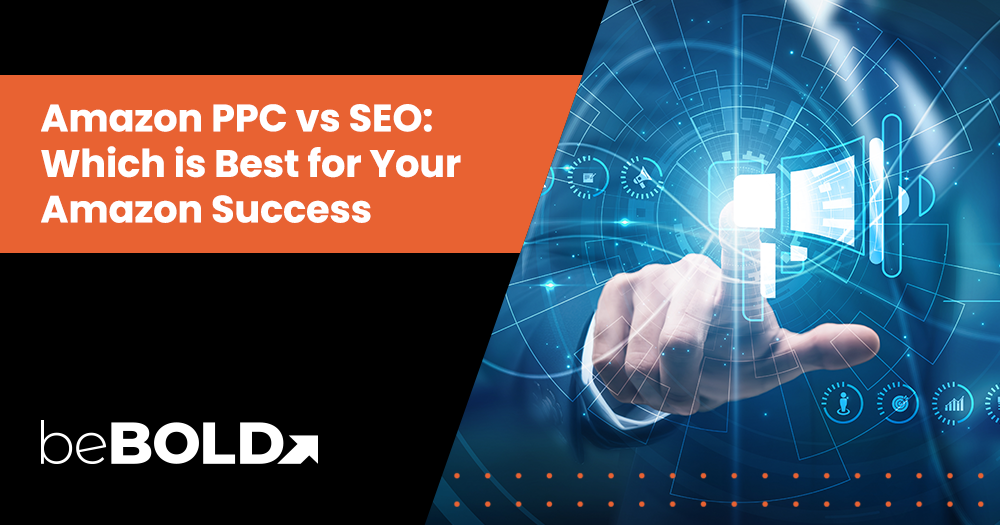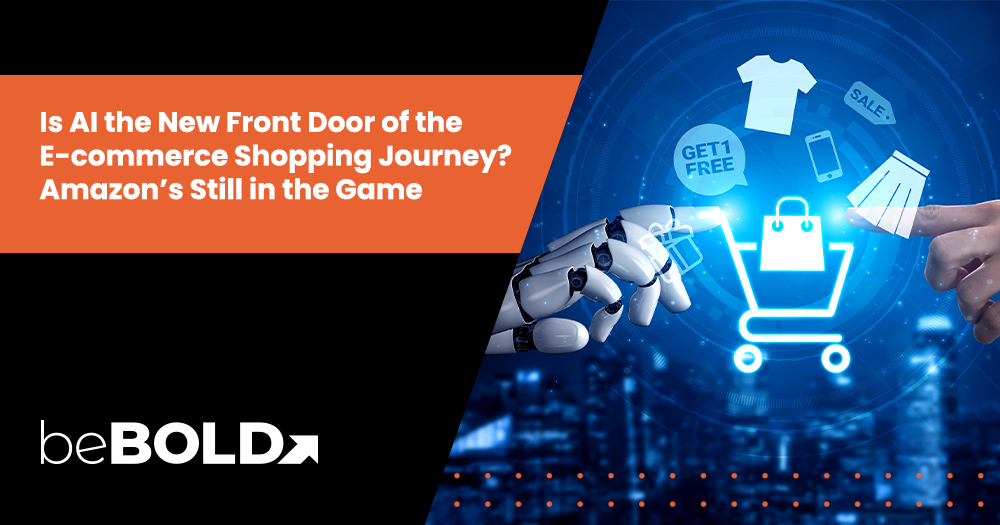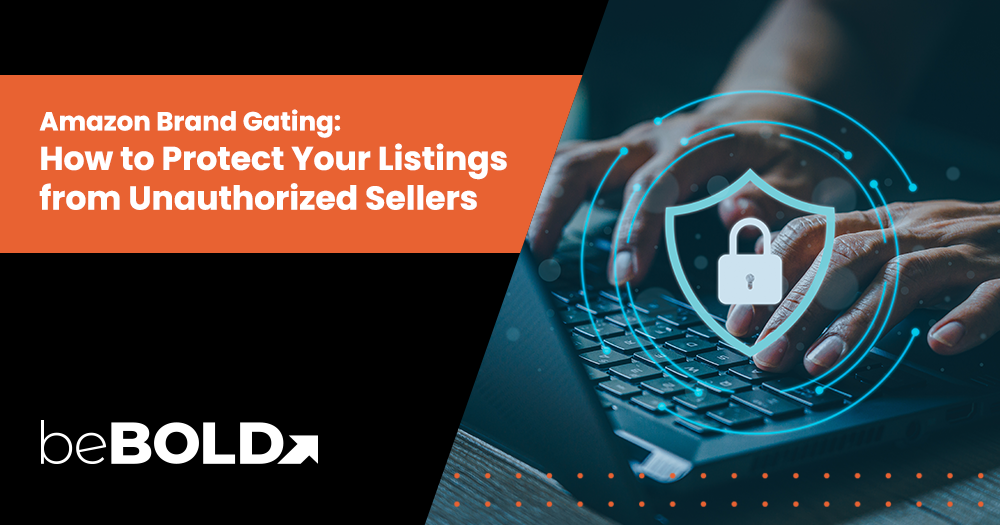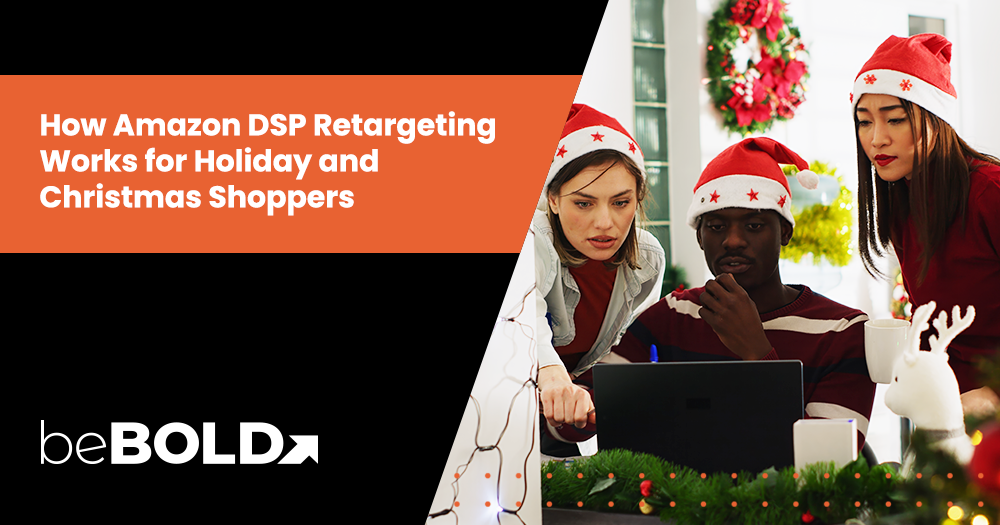Succeeding on Amazon requires a smart balance of SEO and PPC to stand out in a crowded marketplace. Learn how you can overtake your competitors with better visibility and faster conversions today.
Key Summary
- Amazon SEO builds sustainable organic growth by optimizing product listings for visibility and conversions 📈
- Amazon PPC delivers instant visibility and sales by placing your products directly in front of shoppers 💡
- SEO takes time to work but provides long-term ROI, while PPC offers quick wins at a cost ⏱️
- The most successful sellers combine SEO and PPC to create a flywheel effect that boosts rankings and reduces ad spend 🔄
- External traffic, reviews, and sales velocity are increasingly important for success on Amazon in 2025 🌍
Succeeding on Amazon requires more than simply uploading a product and waiting for sales. With millions of items competing for shopper attention, visibility is everything. That’s where two powerful strategies come into play: Amazon SEO and Amazon PPC. Understanding how these two approaches work and how they work together is essential in creating a winning strategy.
Amazon PPC vs Amazon SEO: What's the Difference?

Before diving into the pros and cons, it’s important to understand the distinction:
- Amazon SEO (Search Engine Optimization): Involves optimizing product listings so they appear higher in Amazon’s organic search results. This includes titles, bullet points, descriptions, backend keywords, and A+ Content.
- Amazon PPC (Pay-Per-Click Advertising): Amazon’s advertising platform where sellers bid on keywords to place their products in front of shoppers instantly. You pay only when someone clicks.
In short, SEO is a strategy for long-term sustainability, while PPC is a tool for fast visibility.
Amazon SEO: Build Long-Term Organic Growth
Amazon SEO centers on visibility, credibility, and relevance. Amazon’s evolving A9/A10 algorithm prioritizes product listings that demonstrate strong keyword alignment, high sales velocity, and positive customer experiences. A solid SEO strategy and foundation builds sustainable visibility and helps reduce your brand’s reliance on ads. To better understand how Amazon SEO works, here are its strengths and weaknesses.

What Are the Pros of Amazon SEO?
- Free clicks with no continuous ad spend: Once your product ranks, every click is essentially free, unlike PPC which stops when the budget runs out.
- Builds shopper trust and credibility: Customers are more likely to trust products that appear organically on the first page compared to sponsored placements.
- Delivers consistent, long-term visibility: SEO rankings can provide a steady stream of traffic for months or years with proper upkeep.
- Enhances PPC performance by improving relevance scores: Optimized listings increase click-through and conversion rates, lowering your cost-per-click and improving campaign efficiency.
- Improves sales velocity and review generation: Every organic sale strengthens your Best Seller Rank (BSR) and boosts future discoverability.
What Are the Cons of Amazon SEO?
- Results take weeks or months to show: Unlike PPC, SEO requires patience as it builds momentum gradually.
- Highly competitive for popular keywords: Top search positions are crowded, making it harder to break in without strategic optimization.
- Requires continuous optimization and monitoring: Ongoing keyword updates, review management, and content refreshes are needed to maintain rankings.
- Heavily influenced by algorithm updates and marketplace shifts: Changes to Amazon’s ranking system or competitor actions can affect visibility.
Amazon PPC: Boost Visibility With Paid Ads
Unlike SEO, Amazon PPC provides instant results. Ads allow you to bypass organic ranking challenges and place your product directly in front of shoppers, making it essential for launches, seasonal pushes, and competitive categories. Depending on your goal, sponsored ads can help you reach your intended audience, improve your brand’s visibility, or retarget your past customers.
- Sponsored Products Ads – Promote individual listings directly in search results and product detail pages.
- Sponsored Brands Ads – Showcase multiple products with your brand logo, boosting awareness.
- Sponsored Display Ads – Retarget shoppers both on and off Amazon to keep your products top-of-mind.
However, like any advertising strategy, Amazon PPC comes with its own advantages and disadvantages that sellers should carefully consider.

What Are the Pros of Amazon PPC?
- Immediate visibility and traffic: Ads put your product in front of buyers right away, bypassing the slow climb of organic rankings.
- Scalable sales opportunities: Budgets and bids can be adjusted to scale campaigns up or down depending on performance and seasonality.
- Highly targeted audience reach: Keyword bidding, product targeting, and retargeting ensure ads reach shoppers with strong buying intent.
- Boosts Best Seller Rank (BSR) faster: Increased sales velocity from ads signals Amazon’s algorithm to rank your products higher organically.
- Valuable keyword insights: PPC data reveals high-converting terms that can be repurposed in your SEO strategy.
- Flexible use cases: Ideal for new product launches, seasonal pushes, and testing keywords before committing to SEO optimization.
What Are the Cons of Amazon PPC?
- Daily ad budgets can add up quickly: Without proper monitoring, ad costs can spiral beyond profitability.
- CPCs rise in competitive categories: High-demand keywords can cost $1–$10+ per click, especially in niches like beauty or electronics.
- Traffic disappears when ads stop: Once the campaign ends, visibility vanishes.
- Requires careful management for profitability: Constant bid adjustments, negative keyword refinement, and performance tracking are needed.
- Can lead to cannibalization: Ads may sometimes steal sales from your organic listings if you already rank highly for a keyword.
Head-to-Head: Amazon SEO vs PPC
When evaluating SEO and PPC side by side, each has unique strengths and weaknesses.
|
SEO |
PPC |
|
|
Time to Results |
Slow build, often takes months to rank. |
Instant exposure once campaigns launch. |
|
Sustainability |
Delivers lasting organic traffic that compounds over time. |
Stops immediately when funding ends. |
|
Trust/Perception |
Shoppers perceive organic listings as more credible. |
Ads may be viewed with less trust, though still effective. |
|
Control/Targeting |
Influenced by Amazon’s algorithm and shopper behavior. |
Provides direct keyword-level control and precise targeting. |
|
Cost |
Free traffic, but requires time and resources to optimize. |
Pay-per-click model with ongoing, sometimes high, spend. |
In short, SEO is about credibility, sustainability, and long-term ROI. PPC is about speed, visibility, and short-term acceleration. But how do they fair when it comes to ROI and conversions?
Which is Better for Conversions and ROI? SEO or PPC?
Industry benchmarks show that conversion rates vary significantly between SEO and PPC, with organic search often outperforming paid ads. For example, in B2C ecommerce, SEO converts customers at nearly 3x the rate of PPC (3.3% vs. 1.2%). In B2B ecommerce, SEO drives 4.0% conversion rates compared to PPC’s 1.8%. Service industries also see stronger organic performance: Professional Services convert at 12.3% via SEO compared to 7% with PPC. However, some industries like Finance and B2B Tech lean in favor of PPC, where targeted ads can yield slightly higher conversion rates.
To help you better see the comparison, here’s how SEO and PPC fairs when it comes to the different industries, according to Ruler Analytics.
|
Industry |
Average conversion rate for paid search |
Average conversion rate for organic search |
|
Agency |
6.6% |
2.3% |
|
Automotive |
1.3% |
2.5% |
|
B2B eCommerce |
1.8% |
4.0% |
|
B2B Services |
5.0% |
7.0% |
|
B2B Tech |
2.5% |
1.0% |
|
Cosmetic and Dental |
1.9% |
3.5% |
|
B2C eCommerce |
1.2% |
3.3% |
|
Financial |
6.0% |
4.7% |
|
Healthcare |
5.1% |
5.6% |
|
Industrial |
4.7% |
8.5% |
|
Legal |
1.8% |
4.3% |
|
Professional Services |
7.0% |
12.3% |
|
Real Estate |
1.5% |
3.2% |
|
Travel |
8.5% |
8.5% |
Source: Ruler Analytics
From an ROI perspective, SEO compounds value over time, building trust and sustainable visibility without ongoing ad spend. PPC, while more costly long-term, offers rapid results and can outperform SEO in highly competitive niches where immediate visibility is crucial. The most effective strategy often lies in combining both — using PPC for quick traction and keyword testing, while leveraging SEO for higher long-term conversion efficiency and profitability.
Optimizing Product Listings for Both SEO and PPC

Success on Amazon requires listings that are optimized for both organic search and paid ads. An effective approach blends keyword strategy, conversion-driven content, and backend optimization so that every visitor, whether from organic search of paid ads, sees a high-converting page. Here’s how:
- Leverage keyword research tools (Brand Analytics, Search Query Performance, Helium10, Jungle Scout) to build a comprehensive keyword universe based on high-volume, relevant terms.
- Place top keywords in titles and bullet points, prioritizing the first 80–100 characters for mobile readiness, while keeping copy natural and compelling.
- Max out backend search terms (expanded to 2,500 characters in 2025) to capture synonyms, misspellings, multilingual terms, and long-tail variations for maximum indexation.
- Use high-quality images and A+ Content — lifestyle shots, infographics, and video — to boost click-through rates (CTR) and conversion rates (CVR). Alt text in A+ images also contributes to SEO visibility.
- Optimize pricing, reviews, and inventory levels, since Amazon’s algorithm weighs these heavily for both organic rankings and ad placement relevance.
- Continuously analyze PPC performance data to identify top-converting keywords and integrate them into SEO content, creating a loop that improves efficiency across both channels.
- Ensure consistent branding and messaging across organic and paid placements to strengthen shopper trust and reduce friction during purchase decisions.
Why You Need Both: A Holistic Strategy
Amazon SEO and PPC should be seen as teammates rather than competitors. PPC accelerates visibility, generating sales velocity and reviews that boost organic rankings. At the same time, optimized listings make PPC campaigns more cost-effective. PPC keyword data also informs SEO strategies by revealing which terms drive conversions. Together, these efforts create a flywheel effect where each strategy amplifies the other.
Bring SEO and PPC Together with beBOLD Digital
Amazon SEO and PPC are not either/or choices. Leaning only on PPC is costly in the long run, while relying solely on SEO is too slow to compete. The winning formula is an integrated strategy that balances both for maximum impact.
At beBOLD Digital, we help brands craft holistic Amazon strategies that combine advanced SEO optimization with high-performing PPC campaigns. Whether you’re launching a new product or scaling an established brand, our team ensures you achieve long-term visibility, reduce wasted ad spend, and grow profitably.
👉 Ready to win on Amazon? Contact beBOLD Digital today and let’s build a growth strategy tailored to your brand.
FAQs
Do Amazon PPC & SEO compete against each other?
Sometimes they do. For instance, if your product is already ranked #1 organically, running ads might just capture sales you would have received anyway. However, if you choose not to advertise, your competitors could snag that prime ad spot, making it more strategic to dominate both avenues.
SEO vs PPC — is it possible to sell without PPC?
While it is possible, it can be quite challenging. Relying solely on SEO requires time to gain traction. Most brands lean on PPC during product launches and in highly competitive markets while they wait for their SEO efforts to pay off.
How to rank up and have good sales without PPC?
To boost your rankings and achieve strong sales without relying on pay-per-click (PPC) advertising, concentrate on the basics of SEO. This includes crafting keyword-rich listings, showcasing high-quality images, setting competitive prices, gathering positive reviews, and ensuring consistent stock availability.
How long does Amazon SEO take to work?
Typically, it takes about 6 to 12 weeks, depending on how competitive your category is and the quality of your product.
Can I do Amazon SEO myself?
Yes, but it’s time-consuming. Many sellers hire agencies to manage keyword research, optimization, and ongoing adjustments.
Which is better for my business: Amazon SEO or PPC?
Both are essential. SEO is great for building long-term returns on investment, while PPC can help you achieve quick wins in the short run. The ideal approach really depends on your current stage, goals, and budget.
What is a good ACOS (Advertising Cost of Sale) for Amazon PPC?
It varies by category, but 15–30% ACOS is a healthy range. Lower is better, but aggressive campaigns may temporarily run higher.
How much should I spend on Amazon PPC?
A common rule of thumb is 10% of total revenue. For new launches or peak seasons, many sellers allocate 20–30% temporarily.
Will external traffic really help my Amazon rankings?
Yes. In 2025, Amazon increasingly prioritizes external traffic from Google, social media, and influencers. High-quality external traffic that converts is one of the strongest ranking signals today.










Comments